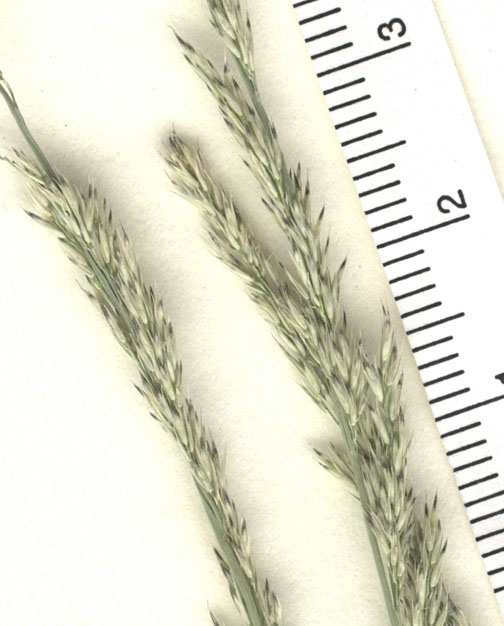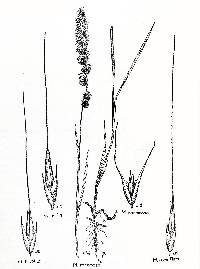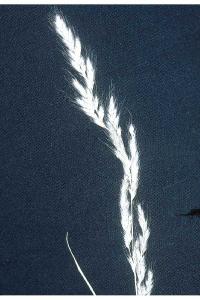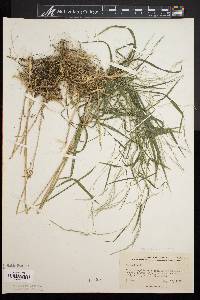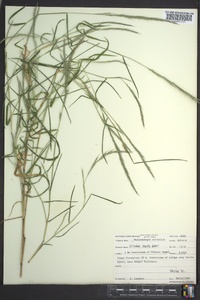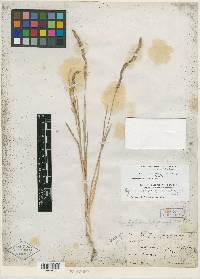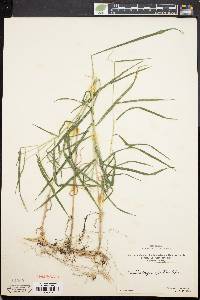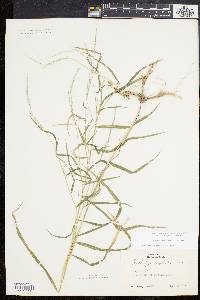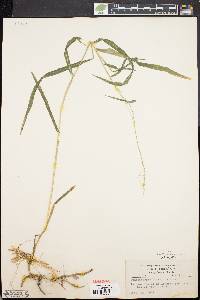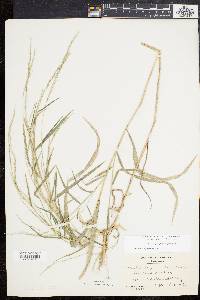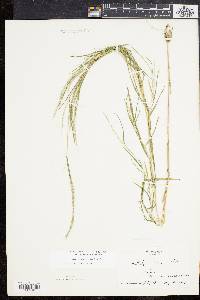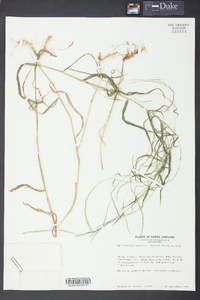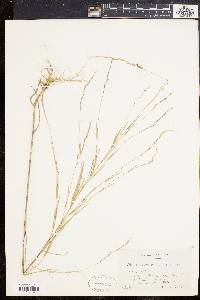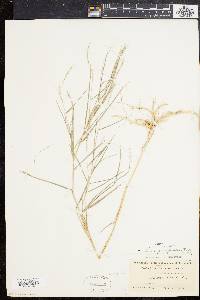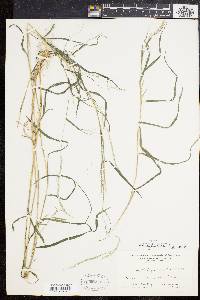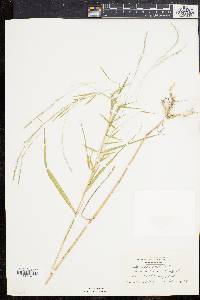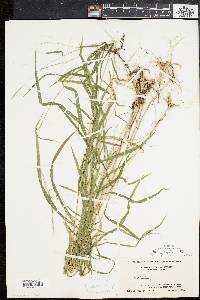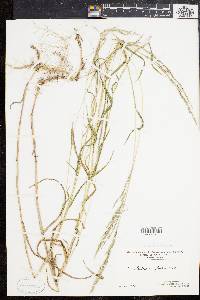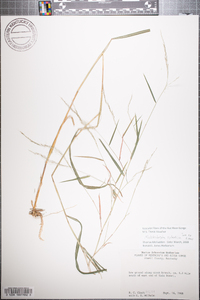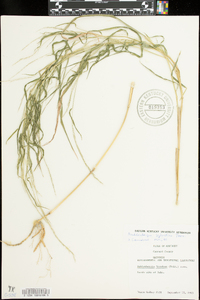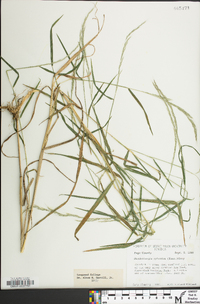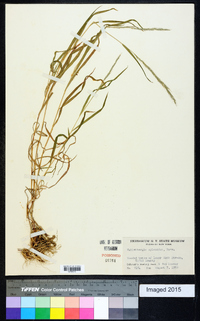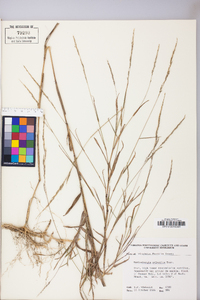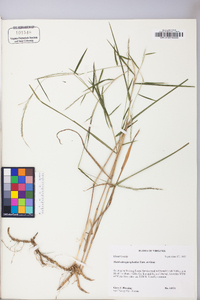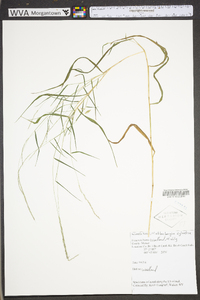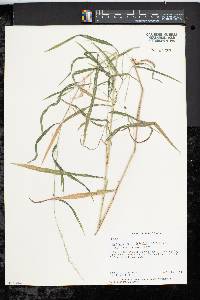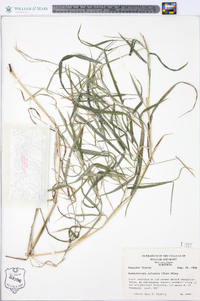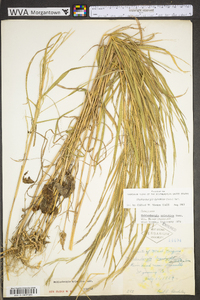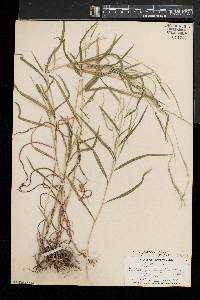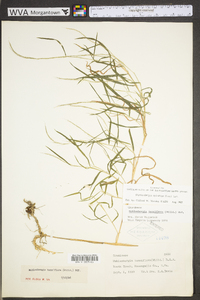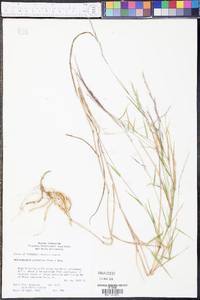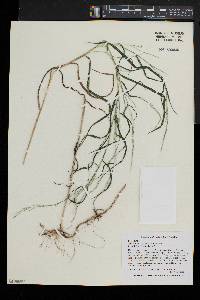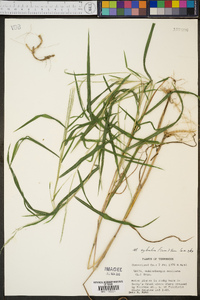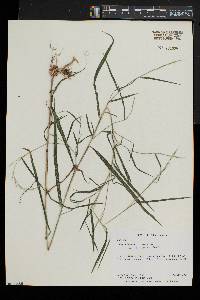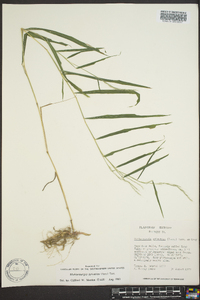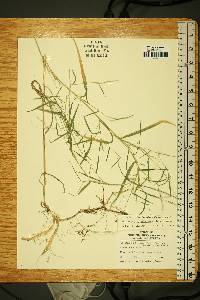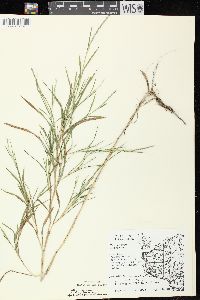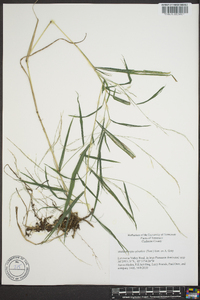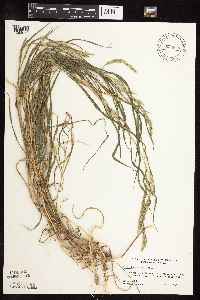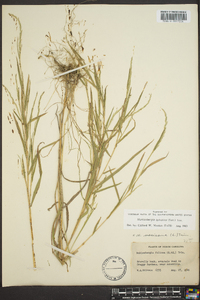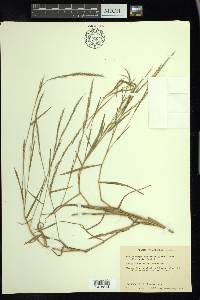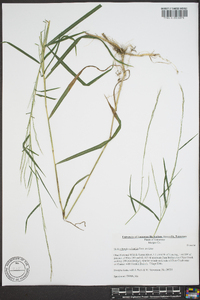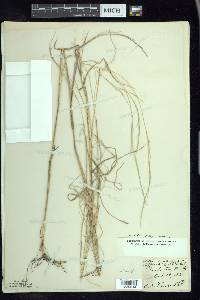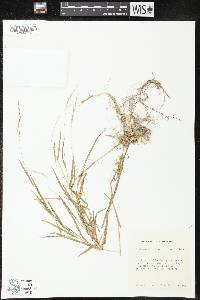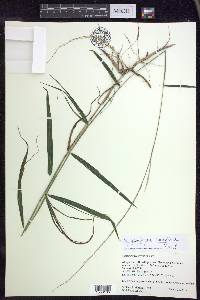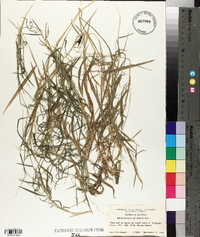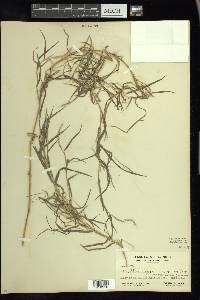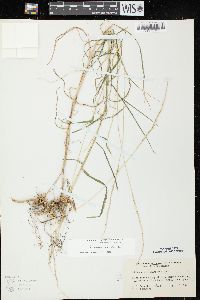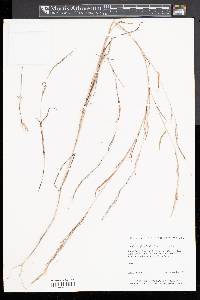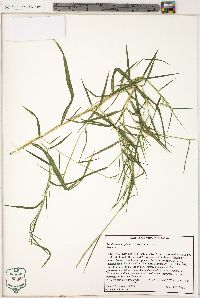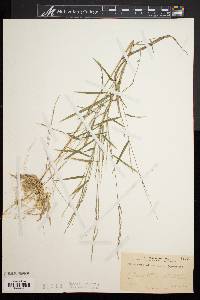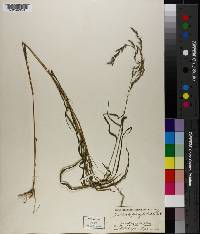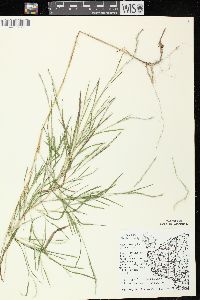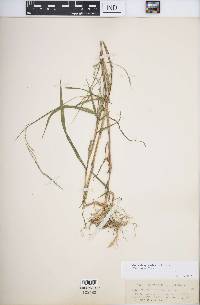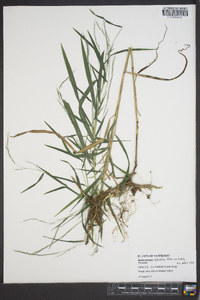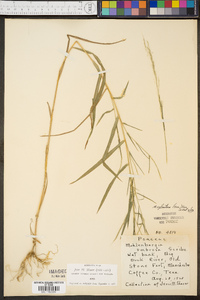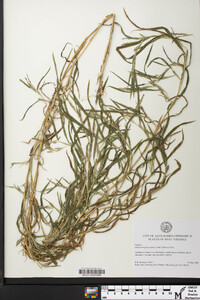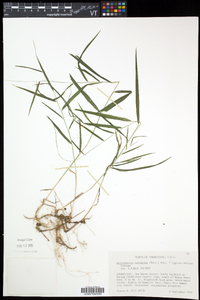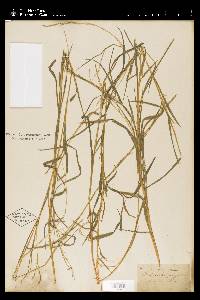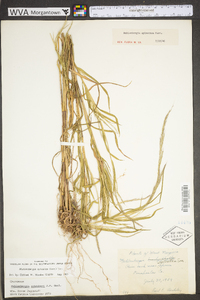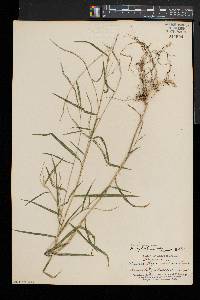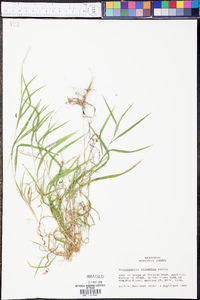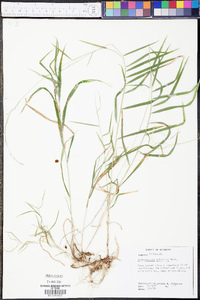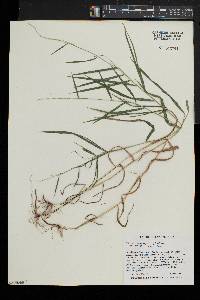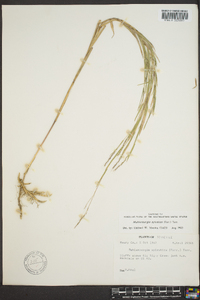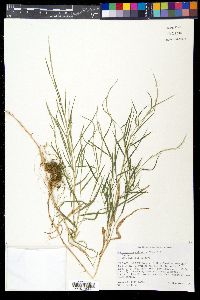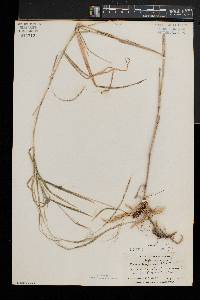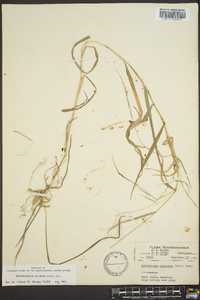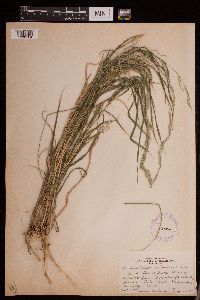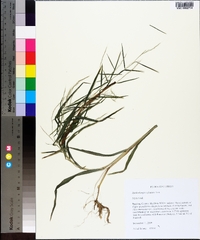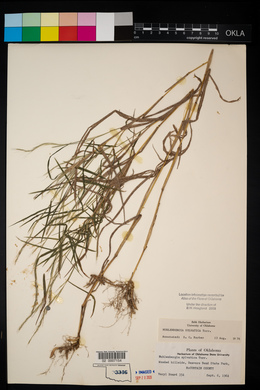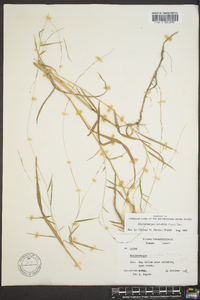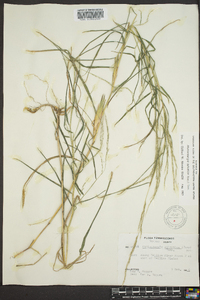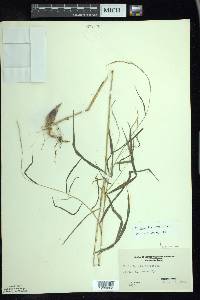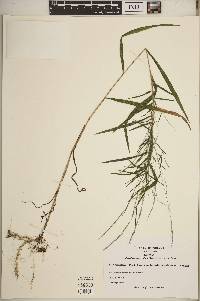
|
|
|
|
Family: Poaceae
Woodland Muhly, more...forest muhly, Muhlenbergie des Bois
[Muhlenbergia diffusa Willd., moreMuhlenbergia sylvatica f. sylvatica (Torr.) Torr. ex A. Gray, Muhlenbergia sylvatica var. gracilis Scribn., Muhlenbergia sylvatica var. robusta Fern., Muhlenbergia umbrosa Scribn.] |
Plants perennial; rhizomatous. Culms 40-110 cm tall, 1-2 mm thick, erect; internodes puberulent for most of their length, strigose below the nodes. Sheaths glabrous and smooth for most of their length, scabridulous distally, margins hyaline; ligules 1-2.5 mm, membranous, truncate, lacerate-ciliolate; blades 5-18 cm long, 3-7 mm wide, flat, scabrous to scabridulous, occasionally smooth. Panicles terminal and axillary, 6-21 cm long, 0.2-1 cm wide, narrow, not dense; axillary panicles usually exserted at maturity; branches 0.8-6 cm, ascending to closely appressed; pedicels 0.8-3.5 mm, strigose. Spikelets 2.2-3.7 mm. Glumes subequal, 1.8-3 mm, nearly as long as the lemmas, 1-veined, tapering from near the base, apices scabridulous, acuminate, unawned or awned, awns to 1 mm; lemmas 2.2-3.7 mm, lanceolate to narrowly lanceolate, hairy on the calluses, lower 1/2 of the midveins, and margins, hairs 0.2-0.5 mm, apices scabridulous, acuminate, awned, awns 5-18 mm, purplish; paleas 2-3.5 mm, lanceolate, proximal 1/2 shortly pilose, apices scabridulous, acuminate; anthers 0.4-0.8 mm, yellow. Caryopses 1.4-2 mm, fusiform, brown. 2n = 40. Muhlenbergia sylvatica grows in upland forests, along creeks and hollows, on rocky ledges derived from sandstone, shale, or calcareous parent materials, moist prairies, and swamps, at elevations from 30-1500 m. It is restricted to the Flora region, its primary range being southeastern Canada and the midwestern and eastern United States. Reports from British Columbia were based on a misidentification (Douglas et al. 2002). The record from Arizona is based on the report in Kearney and Peebles (1951) of a collection made by Toumey at Grapevine Creek in the Grand Canyon. Perennial rhizome-forming herb 40 cm - 1.31 m tall Leaves: having open, hairless sheaths that are minutely rough near the tip and transparent at the margins. The ligules are 1 - 2.5 mm long, flat-topped,membranous, and unevenly cut to hairy along the margin. Blades 5 - 18 cm long, 3 - 7 mm wide, flat, usually rough. Inflorescence: terminal and axillary, spike-like and branched (panicle), 6 - 21 cm long, 0.2 - 1 cm wide, with ascending to appressed branches 0.8 - 6 cm long, and axillary inflorescences usually rising above the leaf sheath. Fruit: a brown, spindle-shaped caryopsis, 1.4 - 2 mm long. Culm: 40 cm - 1.1 m long, erect, 1 - 2 mm wide, internodes appressed-hairy just below the nodes and minutely hairy elsewhere. Spikelets: 2.2 - 3.7 mm long, borne on appressed-hairy stalks 0.8 - 3.5 mm long. Glumes: nearly equal, 1.8 - 3 mm long, with a minutely rough pointed tip, sometimes ending in an awn to 1 mm long, single-veined. Florets: with yellow anthers 0.4 - 0.8 mm long. Lemma: purplish, 2.2 - 3.7 mm long, lance-shaped with a minutely rough and pointed tip terminating in an awn 5 - 18 mm long, three-veined, with hairs 0.2 - 0.5 mm long along the lower half of the midvein and margins. Palea: 2 - 3.5 mm long, lance-shaped with a minutely rough and pointed tip, two-veined, and appressed-hairy on the lower half. Similar species: The following species also have culms that are dull and minutely rough to hairy beneath the nodes. Muhlenbergia tenuiflora is easy to distinguish because its leaf blades are wide (to 15 mm), the often terminal inflorescence is 10 - 33 cm long, and the glumes are shorter than the lemmas. The terminal inflorescences of Muhlenbergia glomerata are 1.5 - 12 cm long, and the glumes are longer than the lemmas. Muhlenbergia mexicana has both terminal and axillary inflorescences 2 - 21 cm long, glumes that are equal to or a little shorter than the lemmas, and lemmas that sometimes have an awn to 1 cm long. Flowering: August to October Habitat and ecology: Infrequent in moist wooded areas and disturbed wetlands. Occurence in the Chicago region: native Etymology: Muhlenbergia is named after American botanist, Gotthilf Henry Ernest Muhlenberg (1753-1815). Sylvatica means "of woodlands." Author: The Morton Arboretum FNA 2007, Ann. Checklist GCNP 1987 Common Name: woodland muhly Duration: Perennial Nativity: Native Lifeform: Graminoid General: Rhizomatous perennial, erect stems to 110 cm tall, with both terminal and axillary panicles, panicles narrow, not dense. Vegetative: Blades 5-18 cm long, 3-7 mm wide, scabrous, flat; ligules 1-2 mm, truncate, membranous; stems 40-110 cm tall, erect; internodes with short, fine hairs for most of its length; sheaths smooth and glabrous for most of its length. Inflorescence: Panicles both terminal and axillary, 6-21 cm long, 2-10 mm wide, not dense; axillary panicles usually exserted upon maturity; branches 1-6 cm long, closely appressed or ascending; spikelets 2-4 mm long; glumes subequal, 2-3 mm long, 1-veined, awned or unawned with awns to 1 mm; lemmas 2-4 mm long, hairy on calluses, lower portion of midveins and along margins, awned with awns 5-18 mm long; paleas 2-4 mm long, apices acuminate; anthers <1 mm long. Ecology: Found in forests, along creeks, in swamps, rocky ledges, and prairies at 100-5000 ft. (30-1500 m). Distribution: Arizona, Texas, and most states north and east of Texas. Notes: The only record from Arizona was at Grapevine Creek in the Grand Canyon, from Kearney and Peebles, 1951. Ethnobotany: Unknown Etymology: Muhlenbergia is named for Gotthilf Heinrich Ernst Muhlenberg (1753-1815) a clergyman and botanist from Pennsylvania; sylvatica means of or growing in the woods. Synonyms: Agrostis sylvatica, Muhlenbergia sylvatica var. robusta, Muhlenbergia umbrosa Editor: LKearsley, 2012 Vigorously rhizomatous, 4-8(-11) dm, erect, or sprawling when old; culms puberulent, especially on the upper half of an internode; sheaths glabrous; blades 5-14 cm נ3-5(-7) mm; ligule prominent, membranous, ciliate, often lacerate, 1-2.5 mm; infls slender, with appressed branches, the peduncle included or exserted to 8 cm; panicle 6-20 cm נ2-5(-10) mm, the spikelets on pedicels to their own length, 2.2-3.7 mm; glumes subequal, tapering evenly to an acuminate tip, equaling or somewhat shorter than the lemma; lemma 2.2-3.7 mm, short-pilose on the callus, with a slender awn 5-18 mm; anthers 0.3-0.5 mm; 2n=40. Upland woods, rocky ledges, and streambanks; Me. and Que. to Minn., s. to N.C., Ark., and Tex. (M. umbrosa) Gleason, Henry A. & Cronquist, Arthur J. 1991. Manual of vascular plants of northeastern United States and adjacent Canada. lxxv + 910 pp. ©The New York Botanical Garden. All rights reserved. Used by permission. From Flora of Indiana (1940) by Charles C. Deam Infrequent throughout the state. It is usually a low ground, woodland species found on the borders of streams, ponds, and swamps, and rarely on dry, wooded slopes. …… Indiana Coefficient of Conservatism: C = 5 Wetland Indicator Status: FACW |

